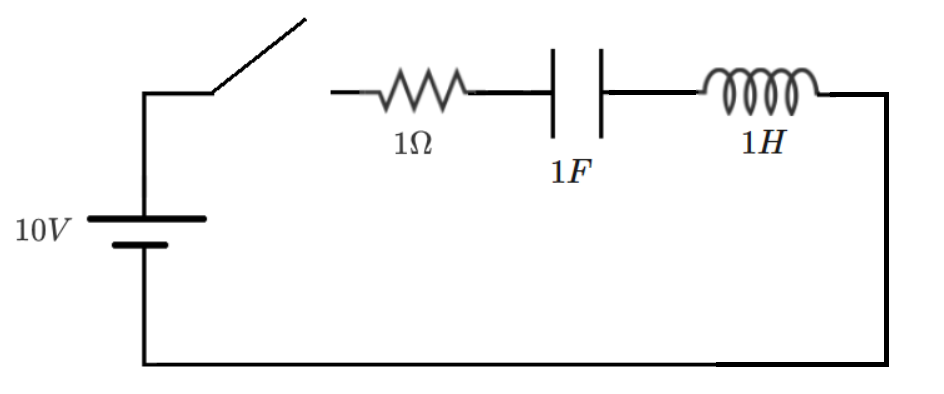RLC Switching - Initial Condition (#2)

In the above circuit (with DC source), the switch closes at time . Prior to closing, the inductor and capacitor are completely de-energized.
What is the magnitude of the voltage across the inductor immediately after the switch closes?
The answer is 10.
This section requires Javascript.
You are seeing this because something didn't load right. We suggest you, (a) try
refreshing the page, (b) enabling javascript if it is disabled on your browser and,
finally, (c)
loading the
non-javascript version of this page
. We're sorry about the hassle.
The voltage across a capacitor cannot change discontinuously, and the current through an inductor cannot change discontinuously. At the instant at which the switch closes:
1) The voltage across the capacitor is zero
2) The current through the inductor is zero
3) Since the resistor is in series with the inductor, the current through the resistor and the voltage across the resistor are zero.
4) Since the capacitor and resistor each have zero voltage, the full source voltage is initially dropped across the inductor.